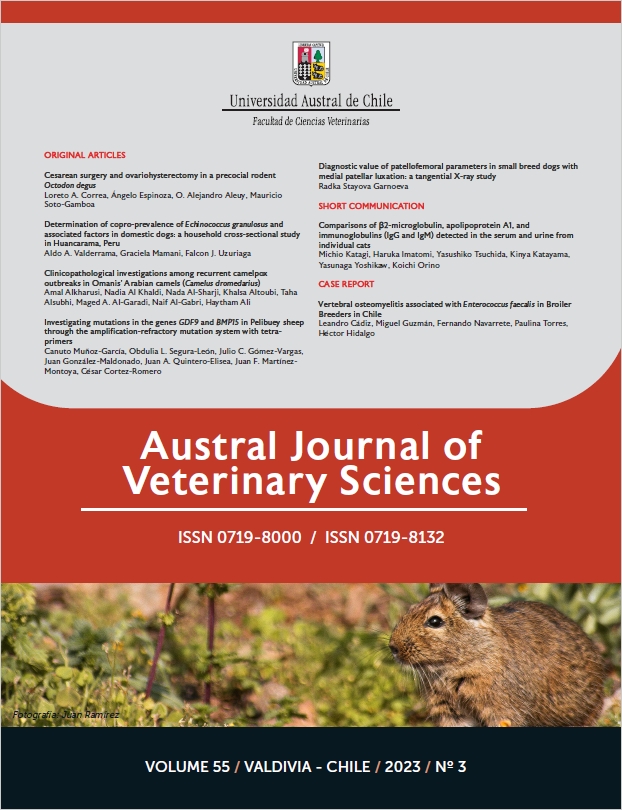Cesarean surgery and ovariohysterectomy in a precocial rodent Octodon degus
Contenido principal del artículo
Resumen
The common degu (Octodon degus) is a trendy rodent pet in Europe and the USA, but is also widely used in scientific research. Information about degu housing, nutrition, behavior, disease diagnosis, and disease treatment is abundant in scientific literature. However, information on reproductive management, such as cesarean section, ovario- hysterectomy, ovariectomy, and orchiectomy, is scarce and anecdotal. Our general objective was to develop a protocol for cesarean section and ovariohysterectomy for degus. Our results indicated that cesarean post-surgical survival was 100% for mothers and 97% for offspring, while ovariohysterectomy female postsurgical survival was 100%. Cesarean surgeries lasted an average of 61.82 min, while ovariohysterectomies lasted an average of 32.65 min. The initial recovery times for cesarean sections and ovariohysterectomies were an average of 8.18 and 5.53 min, respectively. The full recovery time for cesarean section was an average of 50.18 min, whereas that for ovariohysterectomies was an average of 15.38 min. These results suggest that both protocols are viable for use in veterinary clinics that use mid-level equipment. We discuss our results with data from other rodent species and rabbits and with orchiectomy and ovariectomy procedures practiced in degu. Finally, we discuss in detail four critical considerations for cesarean and ovariohysterectomy surgeries performed on small mammals such as degu.


 https://orcid.org/0000-0002-7484-9459
https://orcid.org/0000-0002-7484-9459